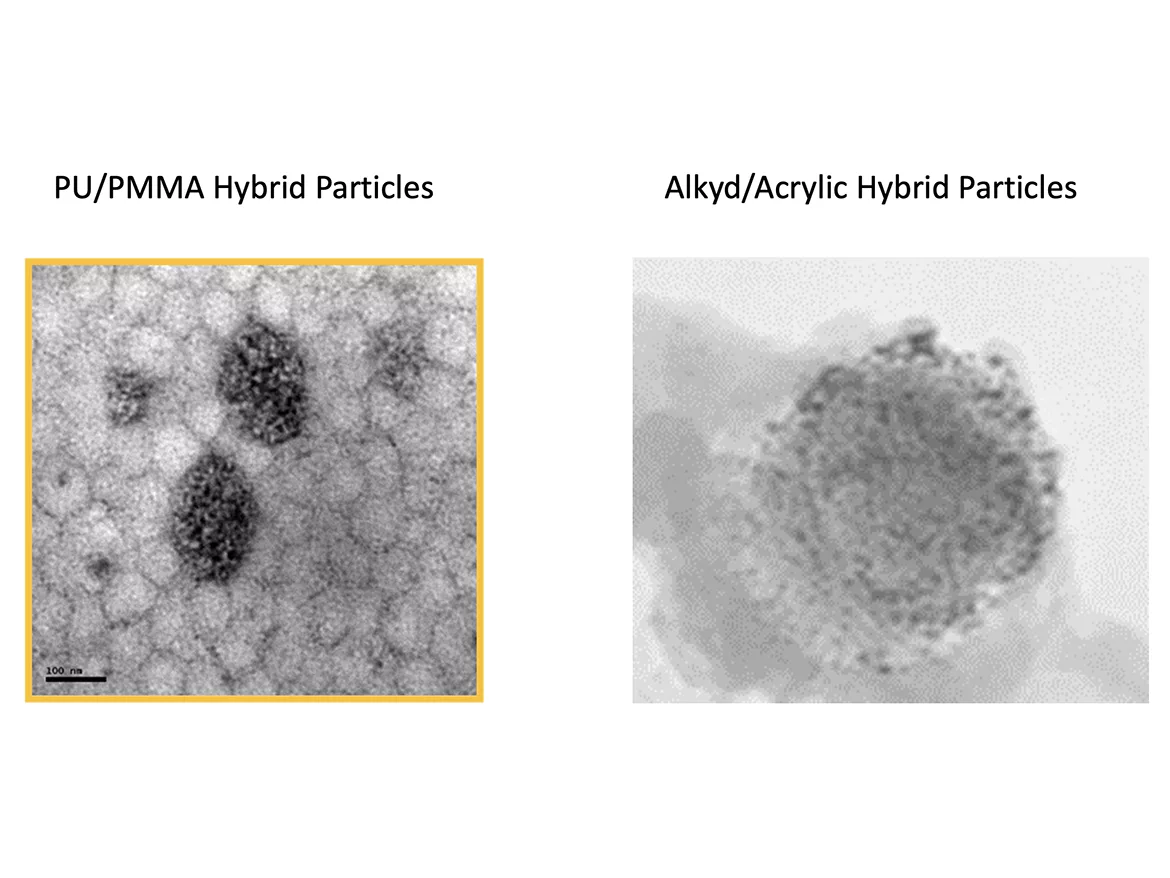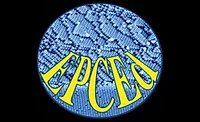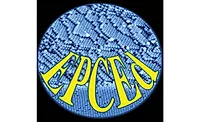A Wide Variety Of “Hybrid” Latex Particles Are Possible

Generally speaking, the word “hybrid” as applied to emulsion polymers means that the particles are composed of one material that is not normally produced via emulsion polymerization (EP) and another material that can be produced via EP. Thus, the resultant particles are composites.
One common example is a polyurethane (PU)/acrylic hybrid latex where the PU is first synthesized via condensation polymerization in the form of a colloidally stable aqueous dispersion, and then the acrylic polymer is formed via free radical polymerization in the presence of the PU dispersion.
Another class of hybrid latex particles is composed of inorganic components (e.g. silica, graphene, TiO2, magnetite) with styrene/acrylic polymers (usually) encapsulating them. Surface modification of the inorganic component (in aqueous dispersion) is often required prior to conducting the free radical polymerization so that the styrene/acrylic polymer will uniformly coat the inorganic particle.
A third example is an alkyd/acrylic hybrid where the alkyd resin is dispersed in water (perhaps by sonication) and followed by the emulsion polymerization of an acrylic copolymer. Here the objective is usually to graft the acrylic polymer chains to the alkyd backbone so as to prevent extensive polymer-polymer phase separation.
Interestingly for the PU/acrylic hybrids, grafting of the acrylic to the PU can be accomplished through the addition of an hydroxy alcohol to the condensation polymerization of the PU. Thus, one can control the degree of polymer-polymer phase separation in these latex particles, as in the alkyd/acrylic case. There is also a good deal of current interest in using silane-based monomers in the polymerization of styrene/acrylic emulsion polymers. When such polymers are made into composite particles with another polymer, they are sometimes referred to as hybrid particles.
This subject is treated in detail in our STEP 6 workshop “Hybrid Latex Systems – PU, Alkyd, and Inorganic/Acrylic Latices.” As always, we welcome your comments and questions. Please contact us via our website, www.epced.com.
The “Did You Know….?” series is a bi-monthly note from Emulsion Polymers Consulting and Education (EPCEd) that is intended to present simple questions about topics that are important to those working in the emulsion polymers area. Short and concise answers to those questions are presented to educate readers and to elicit comments and further discussion. Some readers will already know the answers and be familiar with the topic, while others, especially those newer to the field, will benefit from the answers and discussion. Experienced practitioners may also find new insights in the discussion. Paint & Coatings Industry magazine has partnered with EPCEd to share the “Did You Know” notes with our readers throughout the year.
Looking for a reprint of this article?
From high-res PDFs to custom plaques, order your copy today!






